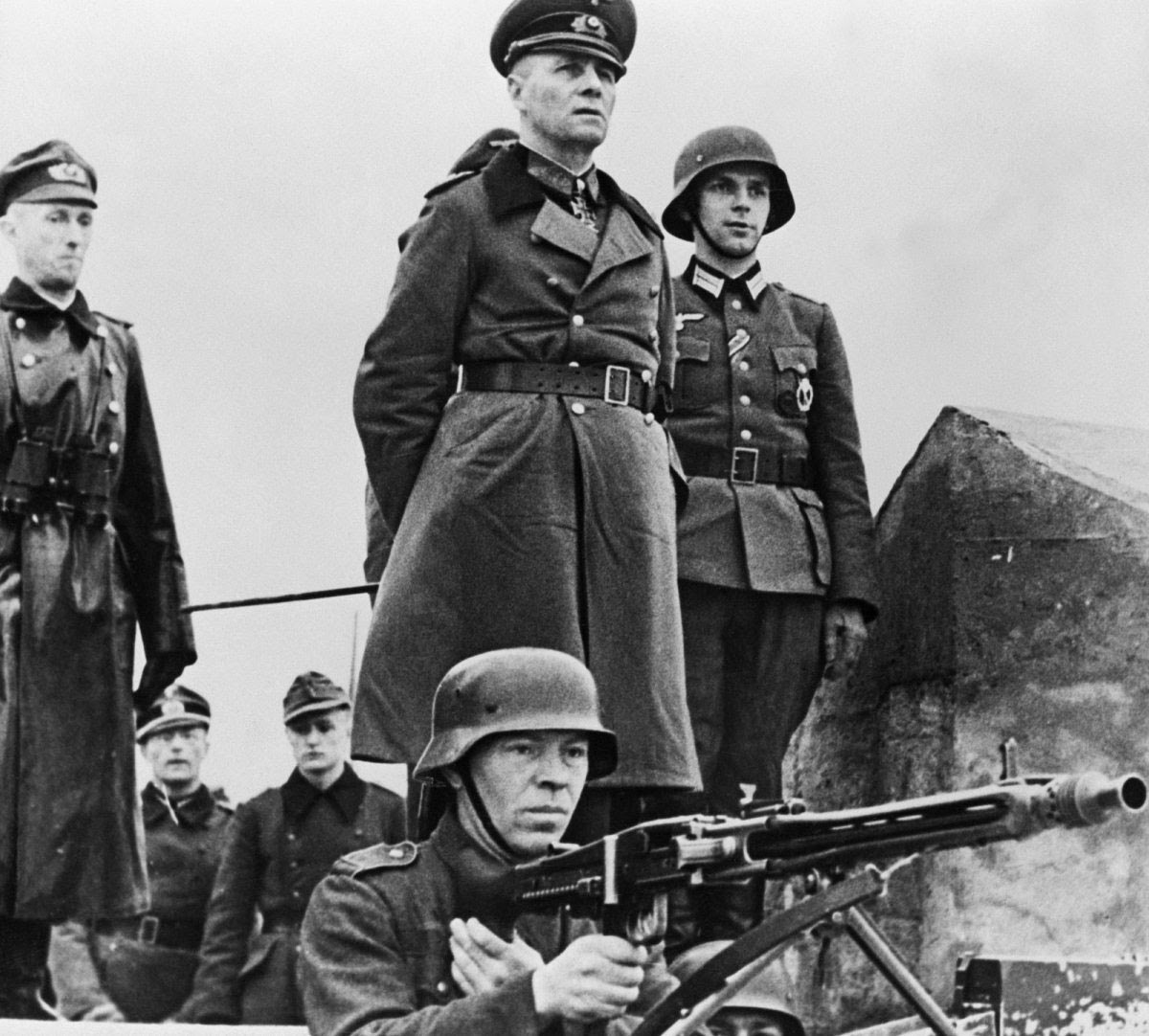
Featured Item

Holocaust horror not exclusively European
Published
3 years agoon
By
Jordan MosheThe Holocaust wasn’t an exclusively European tragedy. Beyond the camps of Eastern Europe, Nazi Germany intended to oppress, deport, and murder all Jews across the Mediterranean and Middle East, a horror not realised thanks to the victories of the Allied forces.
American journalist and author Gershom Gorenberg says the potential reality which faced world Jewry in the 1940s was far grimmer than we may realise.
“Think about the places you associate with the Holocaust,” Gorenberg told his virtual audience at eLimmud2 held via Zoom this past Sunday, 25 October. “You’ll probably think of camps, places in Germany, Russia, or Poland. Even the standard prayer for victims of the Holocaust asks G-d to have mercy on the fallen of Europe, fitting the nearly universal memory as being bound by the European continent.”
This Eurocentric definition of the Holocaust is grossly inaccurate, he stressed.
“It depends on how we actually define Holocaust,” he says. “If it includes the steps the Nazis took leading up to mass murder, then it’s not true it only took place in Europe, but well beyond it.
“There were Jews whose deaths were the result of Nazism and fascism, and to overlook that is to erase the memory of Holocaust victims.”
The rapid advance of Nazi forces across Northern Africa threatened the lives of Jews living outside of Europe, he said.
“Everyone in Cairo knew they faced the same fate as people in Paris or Warsaw. In July 1942, the British embassy in Cairo burned hundreds of documents in anticipation of the arrival of Nazi forces. People were queuing to withdraw their money from banks. They were certain the Germans would arrive.”
Such fears weren’t farfetched given that Erwin Rommel, the acclaimed Nazi general, had taken the Libyan port of Tobruk in a blur ten days earlier after rapid advancement. Given his incredible speed, not even Palestine seemed safe for Jews.
Said Gorenberg, “It was a very uncertain refuge at this time. If Rommel set out rapidly again from El Alamein [midway between Tobruk and Tel Aviv], he would be in Palestine within ten days. The expectation in Palestine was that Rommel was coming.”
Hard as this is for us to understand now, the meaning of Axis forces reaching Palestine wasn’t clear even to those who lived there at the time. News reports of Jews being murdered in Europe were considered mere rumours even amongst Jews in the Middle East, such that the fear of Rommel didn’t actually fully take in the extent of the threat his advancement posed to world Jewry.
Gorenberg said Rommel shared a close relationship with Hitler, and was more than willing to help him advance his murder apparatus across the world.
“He knew what a German conquest really meant,” he said. “Rommel had spoken to Walter Rauff, the engineer of the mobile gassing units which murdered about 1.5 million people. He knew that Jews must be killed.”
This seemed a chillingly likely reality for Jews living in the region between Libya and Egypt in 1940. For almost three years, Axis forces would battle Allied troops across the Mediterranean front in a bid to take over the region. Under Benito Mussolini, fascist Italy attempted to persecute Jews living in cities taken by Italian forces, including the city of Benghazi.
Said Gorenberg, “In 1941, British troops retook Benghazi, which was 5% Jewish. Many Jews greeted them as liberators, and the joy among them was a response to what had been going on under fascist rule.
“Until 1938, Italians had tried to force Jews to become Italian, to assimilate. They later enacted race laws against them. The idea was that Jews were an inferior race, and Italians were Aryans.”
When Rommel retook the city, Mussolini blamed the Jews for the Italians’ earlier defeat, and decreed that they should be expelled to concentration camps in the desert. Libyan Jews were rounded up in trucks and transported over five days to camps, where they subsisted on 100 grams of bread a day, and endured forced labour.
The situation was no better in Baghdad in Iraq. Although the Nazis didn’t reach the city, a coup carried out in 1941 resulted in pro-German Iraqi colonels seizing control of Bagdad. Supported with Nazi supplies, the junta drove out the regent ruler, broadcast anti-Jewish propaganda on local radio, and gave free rein to pro-Nazi movements in Iraq to attack Jews.
“Baghdad was one-sixth Jewish,” said Gorenberg. “It was more Jewish in 1942 than New York is today. The regent successfully returned, and when the Jews went out to welcome him, a mob attacked them.”
The attack lasted two days, and several hundred Jews were brutally murdered before the regent had the police restore order.
Said Gorenberg, “This pogrom is known in Iraqi Jewish history. These people may be the least acknowledged Jewish victims of Nazism.”
Had Rommel successfully invaded the cities of the Nile Delta, a nightmare would have come to pass. Gorenberg said that the SS was so sure of Rommel’s success, it already had plans to carry out the mass murder of Jews in Egypt, Syria, Lebanon, Iraq, and Palestine. All this changed dramatically when Rommel’s trusted intelligence source in Cairo went inexplicably silent.
“At the exact moment Rommel was committed to his invasion, he lost his source,” said Gorenberg. “He didn’t know the British were mounting a defence at El Alamein. Rommel never reached Cairo.”
In spite of the turn of fate, the Nazis remained committed to deporting Jews from Tunisia, their final African foothold.
“The SS expected to murder the 66 000 Jews there, as well as those in Morocco,” said Gorenberg. “The classic process followed: yellow stars, massive fines levied against Jews, adults sent to labour camps, and plans made to deport them to Europe. About 700 Jews were killed.”
That the Nazis not only intended but actively took steps to extend the genocide of Jews to the Middle East is a fact we cannot forget, Gorenberg said.
“El Alamein shows that the borders of the Holocaust were drawn by the Allied army,” he said. “They drew the line in the sand in Africa.
“The Jews who died in Iraq, Libya, and Tunisia were victims of the Holocaust. They were part of the broader picture.”










